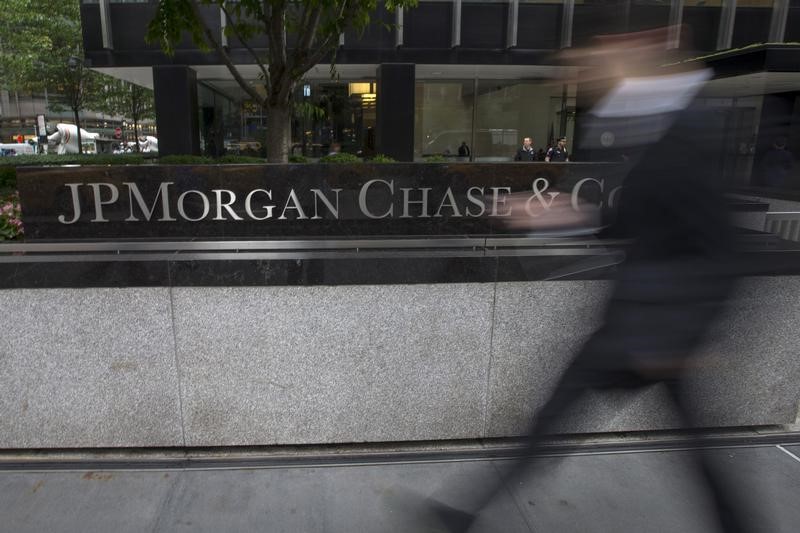By Jamie McGeever and Anjuli Davies
LONDON (Reuters) - Donald Trump's surprise U.S. presidential election victory sparked a frenzy of trading and hedging late last year that boosted top U.S. banks' revenue by 26 percent, according to Reuters calculations, and looks set to keep driving activity.
Leading U.S. banks JP Morgan Chase (N:JPM), Bank of America Merrill Lynch (N:BAC), Citi (N:C), Morgan Stanley (N:MS) and Goldman Sachs (N:GS) collectively raked in $18.3 billion (15 billion pounds) from fixed income, currencies and commodity (FICC) and equity trading in the last three months of 2016.
That was up from around $14.5 billion the year before and driven by investors navigating increasingly murky global politics and a fragile bond market.
Growth was particularly strong in FICC, which saw a 41 percent increase in what is traditionally the slowest quarter of the year. Equities trading grew 5 percent.
European banks will report their fourth quarter results in the coming weeks and are also expected to have enjoyed a trading boost, also driven by the surprising Brexit vote in June.
Despite reservations about his isolationist and protectionist bent, investors quickly latched onto Trump's pro-growth agenda and reflationary policies. Stocks, bond yields and the dollar surged, with Wall Street hitting record highs.
"The Trump effect created a massive move in volatility and volumes, and it's carrying on. I think it could be a good year because the Trump effect is still there, and will probably be the story of the first 90 days of the year. That will carry us to the summer, then we'll see," said Patrick George, EMEA Head of Markets at HSBC in London.
Trump's pledge to loosen fiscal policy through higher spending and tax cuts helped accelerate a global sell-off in bonds already underway on the view that central banks' super-easy monetary and credit policies may be drawing to a close.
The Federal Reserve raised U.S. interest rates in December, only the second hike in a decade, while its Japanese and European peers are still implementing loose monetary policy.
The bond sell-off and policy divergence was a cash-generator for banks despite tighter regulation on their activities in these markets.
Bank Of America's finance chief, Paul Donofrio, predicted his bank could produce an additional $600 million in the current quarter from higher interest rates, with further gains anticipated throughout the year.
"There are events out there that will drive volatility and potentially an increase in the volume of transactions, the same way we saw in the second half of 2016 after Brexit," said HSBC's George.
FX AND RATES
As well as Trump laying out his economic policies, markets will take their cue from the upcoming French election and the formal start of Britain's exit from the European Union.
Fixed income and currency markets is where much of the action is expected to take place.
According to electronic broker ICAP (LON:NXGN), the daily average trading volume of U.S. Treasuries in November soared 46 percent to $214 billion, while Chicago futures markets show bets on 10-year U.S. Treasuries prices falling are the highest since records began over 20 years ago.
ICAP figures also showed that trading volume on its EBS platform, where the majority of euro, Japanese yen and Swiss franc trading against the dollar is done, rose by 52 percent in November to a daily average $115 billion.
Analysts at RBC Capital markets say the near-term outlook for capital markets business is "bright", due to increased optimism over the U.S. economy. Most banks have indicated the start of the first quarter this year is stronger than last year.
Goldman Sachs' banking analysts assume at least a 10 percent rise in FICC and equity trading revenues.
But banks shouldn't be complacent, warns David Myers, head of capital markets, Deloitte UK.

"Bankers cannot rely on volatile revenues to deliver consistently higher returns," Myers said, adding that banks will still be looking to strip out more costs in 2017.